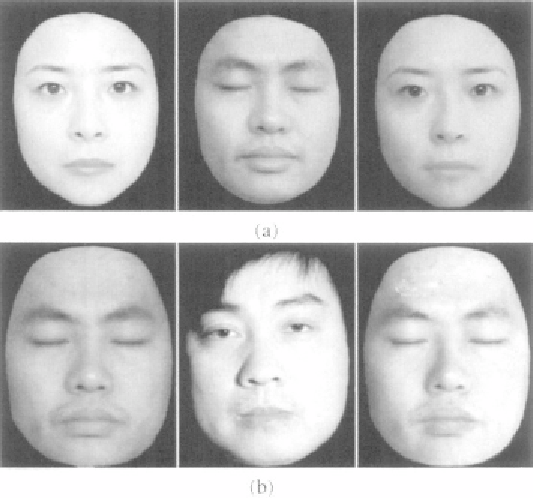Graphics Reference
In-Depth Information
Figure 8.8.
Relightingunder different lighting. For both (a) and (b): Left: Face to be relighted.
Middle: target face. Right: result.
In this section, we show that our technique on face relighting from a single
image can be used for face recognition. The advantage of this approach is
that it only require one image for modeling illumination effects. The underline
theory of this technique holds under general lighting conditions, such as area
light sources.
To normalize the illumination effects for face recognition, we propose to
relight all face images into one canonical lighting condition. The lighting con-
dition of the training images can be used as the canonical lighting condition.
Then we can use equation 8.11 for relighting images into the canonical light-
ing condition. After that, any face recognition algorithms such as Eigenfaces
(PCA) [Turk and Pentland, 1991], Fisherfaces (LDA) [Belhumeur et al., 1997],
can be used on the pre-processed face images for face recognition.
In our preliminary experiments, we first test our approach using the public
available face database: “Yale Face Database B” [Georghiades et al., 2001].
The database contains 5760 single light source images of 10 subjects each seen
under 576 viewing conditions (9 poses × 64 illumination conditions). In our
current experiment, we only consider illumination variations so that we choose
to perform face recognition for the 640 frontal pose images. We choose the

Search WWH ::

Custom Search